Kakadu Day 2: Nourlangie, Mirrai Lookout and Yellow Water Cruise
Közzétett: 10.09.2016



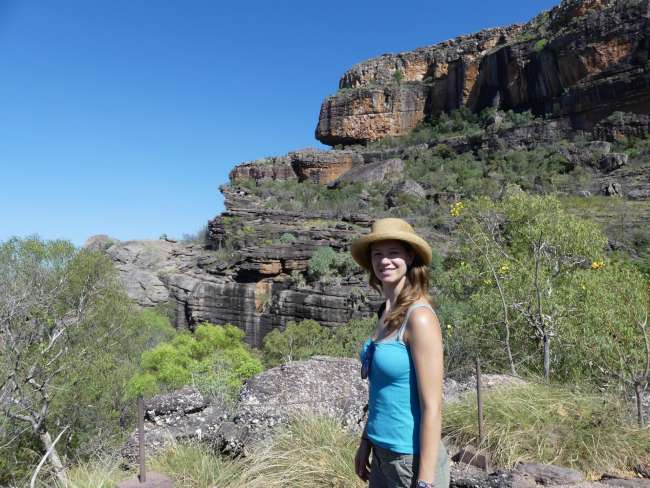






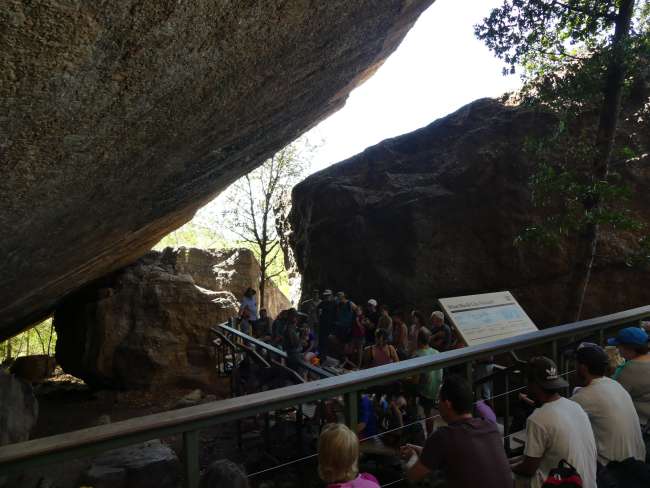













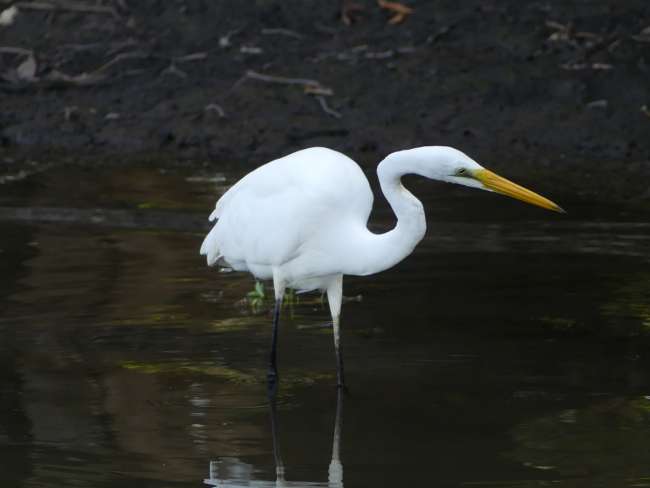






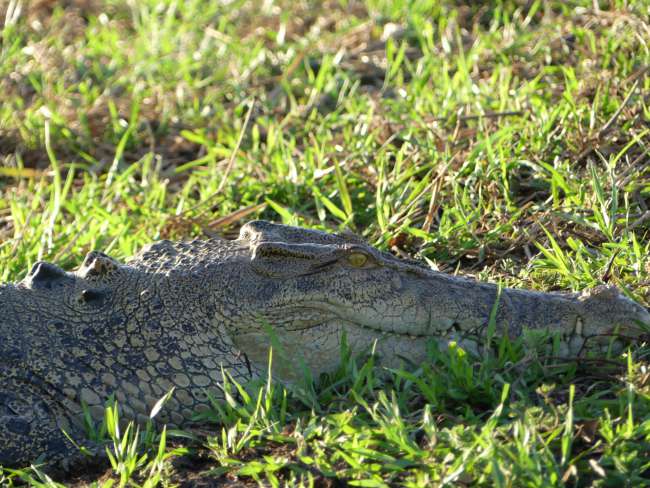

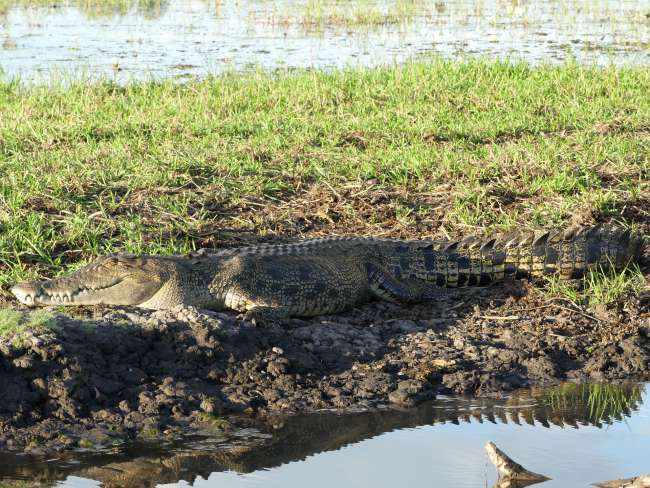








Feliratkozás a hírlevélre
Our second day in Kakadu National Park started early. The alarm went off at 6 am and we wanted to leave by 7:30 am. At 9 am, there were the Rock Art Talks at Burrunggui in the Nourlangie region, which we wanted to participate in to learn about the ancient paintings of the Aboriginal people. So, after extending our stay at the campground for another night and booking our Yellow Water Tour for the evening, we set off. Unfortunately, we left a bit later because the printer at the reception wasn't working.
We arrived at 9:10 am, which means we missed the beginning of the Talks. But it wasn't a problem because you can join in at any time. So, we started walking along the trail and found the group at the Gunwarddehwardde Lookout. From there, we had a beautiful view of Namanjolg’s Feather, a large rock that plays a role in one of the stories of the Aboriginal people. Many places there have historical significance. And by historical, I don't mean 2000 years old, but 20,000 years old! It's crazy that the paintings and excavations found there are already so ancient. Some of the paintings could be even older, around 50,000 years. With each new method of determining the age, this number increases. It's really a long time ago, considering what was happening in Europe at that time.
From the lookout, we continued to the Angbangbang Gallery. There, you can see Namarrgon the Lightning Man. He is a deity who sits in the clouds and creates lightning and thunder with his hands and feet when a storm approaches. His wife Barrginj and he are the parents of Aljurr, a grasshopper that appears with the first storms of the rainy season. The paintings also show Namanjolg, who broke the incest law with his sister. They did that on the rock mentioned earlier, and she pulled a feather from his headdress and placed it on the rock. After breaking the law, Namanjolg went into a river and transformed into Ginga, a saltwater crocodile. With this story, children were taught not to go into the water because there could be crocodiles and they are dangerous because Namanjolg has broken the law before and would do it again and kill children. They also learned to abide by the family laws. We learned a lot about this, but it's really complicated! The Aboriginal people in Kakadu (Bininj) have a system where everything is either Duwa or Yirridjdja. That applies to people, animals, plants, stars, everything. But people are further divided into 4 different skins, which determine their names. From these 8 different names, you always have 2 options for marrying someone, and then the child receives a name determined by the parents' skins. The system works in such a way that incest is avoided because the clans are not very large, and they can only marry the same skins after 4 generations. But it's really complicated, and even the rangers who explained it to us said that it took them a long time to understand it. That was just the short version. It is also the case that there are "poisoned" relationships between brother and sister, and they are not allowed to talk to each other after a certain age. But that doesn't mean they hate each other, they still take care of each other, just through a third person. Also, there is no difference between father and uncle, they are all fathers. The same goes for brothers and cousins - they are all brothers. And your name determines the family relationship you have with another person. So, a 5-year-old child can be the grandfather of a 60-year-old man. It's really fascinating how it all works. And it is still lived that way!
Now back to our Rock Art Talk. Along the trail, we passed more rock paintings. They depict kangaroos, fish, or dancing people, everyday things that the Aboriginal people painted for fun or to show off a great catch. By the way, the paintings are made with different ochre colors obtained from rocks. There are red, yellow, and white tones. The red colors last the longest on the rock, making them the oldest paintings. At the last stop of the Talks, an shelter under a large rock, there were also some stones on the ground with round hollows. These are places where the Aborigines mixed their paint. In this shelter, you could really feel the history. For thousands of years, the indigenous people came together there to live, eat, and make their tools. The guide showed us some things found there during excavations, such as an axe, a bag made of plant fibers, or various rocks that could be fractured into razor-sharp pieces for cutting. It's fortunate that such pieces could be found there because in the tropical climate, everything usually decays very quickly.
At the end of the tour, we were filled with information. Since everything was in English and the guide had a strong accent, not everything was always easy to understand, but I think we got the most important things. And it was really interesting, so we listened carefully, even though the whole thing took 2 hours in total. The guide told the story wonderfully and really took the audience into this world. So, it was a very good decision to get up early and drive there!
Around noon, we drove back. On the way, we stopped at the Mirrai Lookout and climbed up. It was quite exhausting!! There was hardly any shade, and it was steep. You start sweating so quickly. But it was definitely worth it when we reached the top. We brought a small lunch and something to drink and made ourselves comfortable there. We had a 360° view of different areas of the entire park.
After the exertion, we went to the Warradjan Aboriginal Cultural Centre to cool down a bit in the air-conditioned building. The Centre is like a museum and shows the various aspects of the lives of the Bininj. What they eat, how they hunt, how their lives have changed over the past decades with the establishment of Kakadu National Park, and many quotes and opinions from the Aboriginal people who live there today. We found the content really interesting, but Andi said that the layout and route through the Centre were a bit confusing.
After that, we drove back to Cooinda Lodge because we didn't want to be late for our Yellow Water Cruise. A bus picked us up at the campground and took us to the boat dock, which wasn't far away. And at 4:30 pm, our 2-hour boat ride began. The Yellow Water Region is an area around the South Alligator River and part of the river's floodplain. That means large parts are still underwater even during the dry season, and there are hundreds of birds, crocodiles, fish, insects, and even buffalo there. And with the flat boat, we could get very close to the shore if there was something interesting to see. The guy who operated our boat talked non-stop and told us all sorts of things. About animals and plants, where he comes from, and how the land looks during the rainy season. It was interesting, but sometimes I just wanted 2 minutes of silence :D He actually did that once and let our boat drift. It was wonderful! We also drove around the river and floodplain, looked out for animals, and enjoyed the view. We got really close to crocodiles so many times, it was cool! And the many water lilies were also beautiful. We could also see eagles up close and thousands of ducks on the banks. Since we had booked the sunset cruise, we also witnessed how the light slowly changed, it got darker, and the sun set. So beautiful! Our boat was then taken to a specific spot, and we could simply enjoy the view and the reflection of the sun on the water. That was really great. The two-hour ride was truly a highlight, and even though we initially wondered if we wanted to do it because $90 per person is really expensive, I don't regret it at all. You really have to experience something like that!
When we returned to the campground, we cooked noodles for dinner and then went to bed soon after. It was a tiring day! But we experienced so much and learned a lot, it was really wonderful :)
Feliratkozás a hírlevélre
Válasz (1)
Petra
Immer wieder diese fantastischen Fotos !! Da ist man wirklich fast mit dabei.... :))
